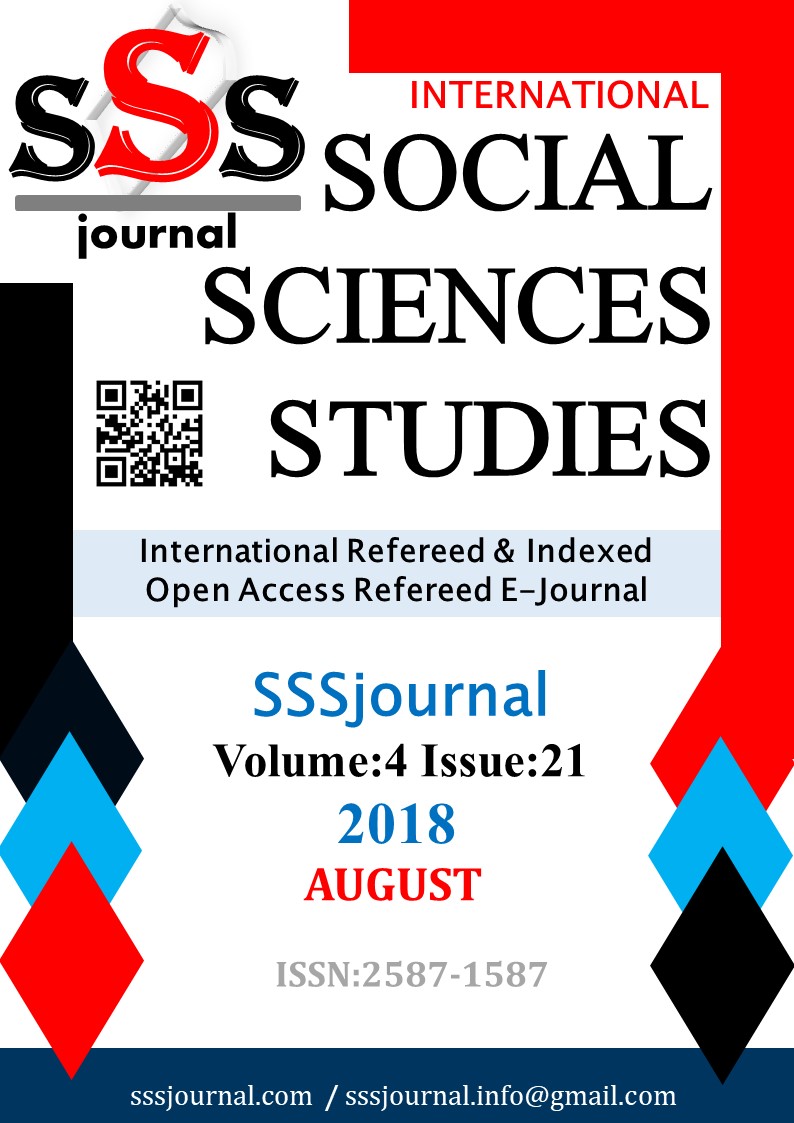Author :
Abstract
Çaldıran Ovası ve çevresinin jeomorfolojik özelliklerini ortaya koymayı amaçlayan bu çalışmada; farklı jeomorfolojik birimlerin oluşum ve gelişimleri araştırılmıştır. Son yıllardaki gelişmeler, doğal ortam ile insan arasında akılcı bir dengenin kurulması gerektiği fikrini ön plana çıkarmıştır. Bu nedenle herhangi bir bölgenin jeomorfolojik özelliklerinin bilinmesi, farklı morfolojik birimlerin verimli bir şekilde kullanılması kaçınılmaz bir hal almıştır. Çaldıran Ovası ve çevresinde iç etken ve süreçler ana morfolojik birimlerin oluşumunu sağlarken, flüvyal süreçler bu morfolojik birimleri yer yer derin bir şekilde parçalayarak aşınım ve birikim şekillerini meydana getirmiştir. Bunlar, orojenik hareketler sonucunda kıvrılarak yükselmiş dağlık alanlar. Orta Miyosen’de meydana gelen neotektonik hareketler sonucunda faylanmalara bağlı olarak dağlık alanlar tekrar yükselirken değişen yerel taban seviyesine göre gelişen aşınım-birikim olaylarının şekillendirdiği platolar ile ova tabanıdır. Bölgenin şekillenmesinde orojenik hareketlerin etkisi olmakla birlikte esas şekillenme Orta Miyosen’de Neotektonik dönemin başlaması ile birlikte görülen epirojenik-kratojenik hareketlerle olmuştur. Volkanizma faaliyetleri neticesinde bol miktarda volkanik malzeme çıkmış ve çok geniş alanlara yayılarak bu günkü morfolojik manzaranın ortaya çıkmasına vesile olmuştur.
Keywords
Abstract
In this study aiming to reveal the geomorphological characteristics of Çaldıran Plain and its surroundings; the formation and development of different geomorphological units have been investigated. The developments in recent years have brought to the forefront the idea that a rational equilibrium must be established between the natural environment and human beings. For this reason, it is inevitable to know the geomorphological properties of any region and to use different morphological units efficiently. While the internal factors and processes around Çaldıran Plain provide the formation of the main morphological units, the fluvial processes break down these morphological units in some places deeply, causing the forms of erosion and accumulation. These are mountainous areas that have curled up as a result of orogenic movements. It is the basin of the plateau formed by the erosion-accumulation events that develop according to the local base level which changes while the mountainous areas rise again due to faulting as a result of the neotectonic movements that took place in the Middle Miocene. The effect of orogenic movements in the formation of the region has been accompanied by the epirogenic-cratogenic movements associated with the beginning of the Neotectonic period in the Middle Miocene. As a result of volcanic activity, abundant volcanic material emerged and spread to a very wide area and this morphological view was revealed.
Keywords
- Arpat, E.; Şaroğlu,F. & İz, H.B., (1977). "1976 Çaldıran Depremi" Yeryuvarı ve İnsan, Cilt 2, (Sayı 1): 29-
- Arpat, E.; Şaroğlu,F. & İz, H.B., (1977). "1976 Çaldıran Depremi" Yeryuvarı ve İnsan, Cilt 2, (Sayı 1): 29- 41.
- Atalay, İ. (1986). Uygulamalı Hidrografya I, Ege Üniv. Edebiyat Fak. Yayın No. 38, İzmir.
- Çakır,Y.; Tanyolu, E. (1992). "Çaldıran Yakın Civarının Jeolojisi Ve Çaldıran Fayı Üzerine Tektonik İncelemeler" Akdeniz Üniv. 7. Müh. Haftası, :38, İsparta.
- Çakır, Y. (1995). "Çaldıran Fayı Ve Dolayının Jeolojik İncelenmesi", Doktora Tezi Karadeniz Teknik Üniv. / Fen Bil. Enst., Trabzon.
- Erinç, S. (1953). Doğu Anadolu Coğrafyası, İstanbul Üniv. Coğ. Enst. Yayının No. 15 İstanbul Üniv. Yayının No. 572, İstanbul.
- Gökkaya, K.Y. (1993). "Çaldıran (Van) Nermik Arasında Çaldıran Fayının Jeolojik Ve Tektonik Özellikleri", Yüksek Lisans Tezi, Cumhuriyet Üniv. / Fen Bil. Enst., Sivas.
- Güner, Y.; Şaroğlu, F. (1987). "Doğu Anadolu’da Kuvaterner Volkanizması Ve Jeotermal Enerji Açısından Önemi", Türkiye 7. Petrol Kongresi, 6-10 Nisan 1987, : 371-383, Ankara.
- Ketin, İ. (1977). "Türkiye’nin Başlıca Orojenik Olayları Ve Paleocoğrafik Evrimi", M.T.A. Dergisi. (Sayı 88) : 1-5.
- Koçyiğit, A.; Yılmaz,A. & Adamia, S. & Kuloshvili, S. (2001). "Neotectonics Of East Anatolian Plateau(Turkey) And Lesser Caucasus: Implication For Transition From Thrusting To Strike-Slip Faulting", Elsevier Science Geodinamica Acta (14) : 177-195.
- Levendoğlu, E. (1979). "Muradiye -Çaldıran Ovaları Planlama Kademesinde Hidrojeolojik Etüt Raporu" DSİ Raporu, Van.
- Oruç, N; Alpman, N. & Karamenderesi, İ.H. (1976). "Tendürek Volkanı Çevresindeki Yüksek Fluorür İçerikli Kaynak Suların Hidrojeolojisi" TJK Bülteni (19) : 1-8.
- Ölmez, E.; Ercan, T. & Yıldırım, T. (1994). "Tendürek (Doğu Anadolu) Jeotermal Alanının (Diyadin, Zilan, Çaldıran) Volkanolojisi Ve Jeotermal Enerji Olanakları" TJK Bülteni (9) : 48-55.
- Şaroğlu, F.; Yılmaz, Y. (1984). "Doğu Anadolu’nun Neotektoniği İle İlgili Mağmatizması" Ketin Sempozyumu, 149-162, Ankara.
- Şaroğlu, F. (1985). "Doğu Anadolu’nun Neotektonik Dönemde Jeolojik Ve Yapısal Evrimi", Doktora Tezi, TPAO Rapor No. 504, İstanbul Üniv. / Fen Bil. Enst. Jeoloji Müh. Anabilim Dalı, İstanbul.
- Şenel, M. (1987). "1/100.000 Ölçekli Açınsama Nitelikli Türkiye Jeoloji Haritası Serisi Başkale-H 38 Paftası" MTA Genel Müd. / Jeoloji Etütleri Dairesi, Ankara.
- Tanyolu, E.; Çakır,Y. (1996). "Çaldıran Fayı Ve Civarının Tektonik İncelenmesi", KTÜ Mühendislik- Mimarlık Fak. Jeoloji Müh. Bil. 30. Yıl Sempozyumu, Cilt:I : 250-262 Trabzon.
- Tokgöz, M.N.; Arpat, E. & Şaroğlu, F. (1977). "East Anatolian Earthquake Of 24 November1976" Nature Vol. (270) : 423-425.
- Tuncel, M.; Erer, S. & Sergün, Ü. & Göçmen, K. (1978). 24 Kasım 1976 Çaldıran - Muradiye Depremi, İstanbul Üniv. Ede. Fak. Yayın No. 2468 Coğrafya Enst. Yayın No. 98, İstanbul.
- Tümertekin,E. (1973). "Yerleşme Planlaması Şehir-Köy İlişkileri" İstanbul Üniv. Coğrafya Enst. Dergisi. Cilt 10, (Sayı 19) : 71-85.
- Yılmaz, H.; Açıkgöz, S. (1990). "Van İli Çaldıran İlçesinde Çıkan Karbondioksit Gazının ArındırılmasıProjesinin Değerlendirme Raporu" MTA Genel Müd. / Enerji Hammadde Etüt Ve Arama Dairesi Başkanlığı Proje No. 90-61, Ankara.
- Yılmaz, Y.; Güner, Y. & Şaroğlu, F. (1998). "Geology Of The Quaternary Volcanic Centres Of The East Anatolia" Elsevier Science Journal Of Volcanology And Geotermal Research (85) : 173-210.





